Sitting just out side the St. Charles History Museum is a ship bell that might seem a little out of place for the Fox River Valley. Donated to the Museum by Thomas E. Rosensteel and Nuala McKiernan Rosensteel from the Wild Rose Farm property, the bell has a unique history which started on the trade routes of the Mississippi, passed through Mardi Gras in New Orleans, and finally ended on the front patio of our Museum.
The Frank Pargoud steamboat. John W. Tobin named the J. F. Pargoud after planter and Confederate Civil War General Frank Pargoud. The bell can be seen here perched atop the upper deck of the Frank Pargoud.
Cast at the William Kay Foundry in Louisville, Kentucky, the bell was mounted on the Frank Pargoud steamboat built in 1868 by New Orleans steamboat captain and cotton manufacturing pioneer John W. Tobin. The Frank Pargoud was built to replace the J.F. Pargoud, which Tobin burned during the Civil War rather than accept $300,000 for it from the Union Army, and by doing so, betray the Confederacy. The Frank Pargoud enjoyed a ten year run of the New Orleans-St. Louis trade route before being decommissioned.
The Chalmette, rebuilt from the wreckage of a previous steamboat, ran the New Orleans to St. Louis packet regularly.
After the Frank Pargoud's retirement, the bell was installed on the Chalmette steamboat. Rebuilt in 1898 from the remains of the City of Vicksburg steamboat, which met it's untimely end in the St. Louis Tornado of 1896 and was never repaired. The Chalmette was one of the last steamboats running a regular route from New Orleans to St. Louis. While carrying passengers to the St. Louis World’s Fair in 1904, the Mighty Mississippi got the best of the steamboat when she struck a snag just south of Natchez, Mississippi and sank. All passengers made it off the boat unharmed and with their luggage, but the bell wasn't as lucky. Divers recovered the bell from the wreckage and it was sent to Red Leaf Plantation in Arkansas.
In 1915, the bell returned to New Orleans and rang in the Krewe of Rex’s Mardi Gras parade arrival. Founded in 1872, the Krewe of Rex has held more parades than any other Mardi Gras Krewe and are the originators of the official Carnival colors of purple, green, and gold.
The bell tower on Herbert P. Crane’s Wild Rose Farm where the bell hung for over 50 years. Crane used the farm in addition to Crane Woods for hunting and horseback riding with his friend and fellow St. Charles notable Col. Edward J. Baker.
The bell resurfaced when it went up for auction in New Orleans in 1920 and was purchased by Herbert P. Crane of St. Charles. Herbert P. Crane was a millionaire and the son of Richard T. Crane, the ironworker and founder of manufacturer Crane Co. He installed the bell in a tower at his estate on Wild Rose Farm, where it rang to signal the beginning and end of each workday and to call his employees to dinner. The bell stayed on the property until 1986 when the Rosensteel and Lappin families developed the Crane Road Estates on the former site of Wild Rose Farm.
The St. Charles History Museum received the bell on December 27, 2007 as a donation from Thomas E. Rosensteel and Nuala McKiernan Rosensteel in memory of Thomas F. Lappin and Anne Rosensteel Lappin. The bell was dedicated on Septebmer 8, 2009 and was placed on the patio in front of the Museum for visitors and pedestrians to enjoy. The next time you're nearby, stop and take a look at this interesting and unique piece of history sitting right out front of the Museum on Rt 64.





